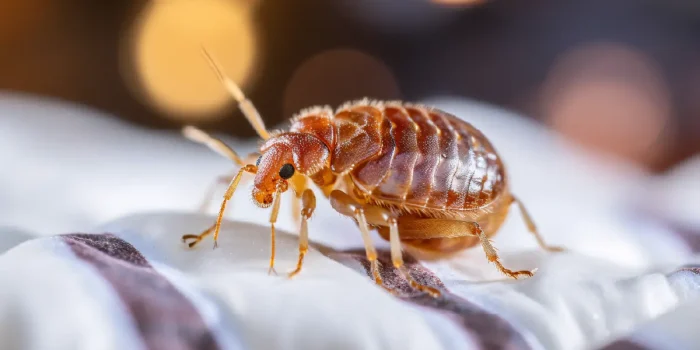Introduction
Fleas and zoonotic diseases are increasingly intertwined in today’s rapidly shifting ecological landscape. These tiny, blood-feeding insects are more than a nuisance—they are potent vectors capable of transmitting dangerous pathogens between animals and humans. Their ability to cross species boundaries makes them a critical concern in disease ecology and public health.
As urbanization, climate change, and biodiversity loss intensify, understanding the relationship between fleas and zoonotic diseases is essential.
How do these parasites influence global health, and how can a One Health approach help mitigate their growing threat?
Fleas and Zoonotic Diseases: A Public Health Concern
Fleas are blood-feeding ectoparasites with the capacity to transmit several zoonotic pathogens. The most notorious example is the plague, caused by Yersinia pestis, historically spread by the oriental rat flea (Xenopsylla cheopis) [1]. Today, this ancient disease remains a risk in some regions, especially in areas with poor sanitation and rodent control.
Modern threats include murine typhus (Rickettsia typhi) and cat scratch disease (Bartonella henselae), both of which are associated with the common cat flea (Ctenocephalides felis) [2]. Studies have also shown fleas to harbor protozoan pathogens like Babesia microti and Toxoplasma gondii, which adds to concerns over their role in the transmission of emerging diseases [3].
Because fleas can bite different species in succession, they serve as conduits for cross-species transmission, underscoring their relevance in zoonotic disease ecology.
Host-Flea Dynamics and Ecosystem Interactions
Flea-host interactions are shaped by host availability, environmental conditions, and ecological diversity. Some flea species exhibit strict host specificity, while others act as generalists. This behavior makes them particularly effective in linking wildlife, domestic animals, and humans.
For example, domestic pets infested with fleas may interact with both wildlife and humans, facilitating pathogen spillover. Additionally, peri-urban wildlife like rodents and stray animals can serve as reservoirs for infected fleas. Habitat disruption and climate change can alter flea-host relationships, further increasing disease risk [4].
Environmental factors such as humidity, temperature, and vegetation also regulate flea population dynamics. Warmer climates and poor waste management favor flea survival and reproduction, expanding their range and seasonal activity. Urbanization has made cities hotspots for flea-borne infections.
Prevention and Control Measures
Preventing flea-borne zoonoses requires a multilayered strategy:
- Veterinary Intervention: Routine flea treatments for pets can reduce household exposure.
- Environmental Management: Cleaning animal bedding, treating yards, and sealing cracks can eliminate flea habitats.
- Community Engagement: Public education about flea risks and proper hygiene can empower communities to act.
Municipal programs focusing on rodent control and sanitation are equally important. Early surveillance of flea populations and the pathogens they carry can help anticipate outbreaks.
A One Health Perspective
The One Health approach is vital to understanding and managing flea-related disease threats. Since fleas operate across human, animal, and environmental interfaces, collaboration between sectors is necessary.
For instance, monitoring flea prevalence in wildlife and pets can offer early warnings for disease emergence. When veterinary, ecological, and medical professionals share data, it leads to better prevention strategies. One Health also emphasizes habitat protection and responsible animal care, which are key in breaking the transmission chain of flea-borne pathogens [5].
By considering the full ecological context, One Health enables more effective and sustainable responses to vector-borne diseases.
Conclusion
Fleas are small in size but significant in their public health impact. Their interactions with animals and the environment make them central players in the transmission of zoonotic diseases. As urbanization and climate change reshape ecosystems, flea-borne threats may become more frequent.
By adopting a One Health framework—integrating environmental, animal, and human health perspectives—we can develop smarter, more resilient systems for managing fleas and the diseases they spread. Protecting ourselves means understanding and disrupting the ecological networks that support these vectors.
References
- European Centre for Disease Prevention and Control (ECDC). (2023). Fleas (Siphonaptera) – Factsheet for health professionals. Retrieved from https://www.ecdc.europa.eu/en/infectious-disease-topics/related-public-health-topics/disease-vectors/facts/fleas-siphonaptera
- Krasnov, B.R., et al. (2010). Anthropogenic disturbance and the risk of flea-borne disease transmission. Oecologia, 162(3), 685–694.
- Wójcik-Fatla, A., et al. (2020). Zoonotic Protozoans in Fleas Parasitizing Companion Animals. Annals of Parasitology, 66(1), 21–28.
- Herrero-Cófreces, S., et al. (2021). Flea infestation in rodents and insectivores from agro-ecosystems. Parasites & Vectors, 14(1), 16.
- Bitam, I., et al. (2010). Fleas and flea-borne diseases. International Journal of Infectious Diseases, 14(8), e667–e676.













